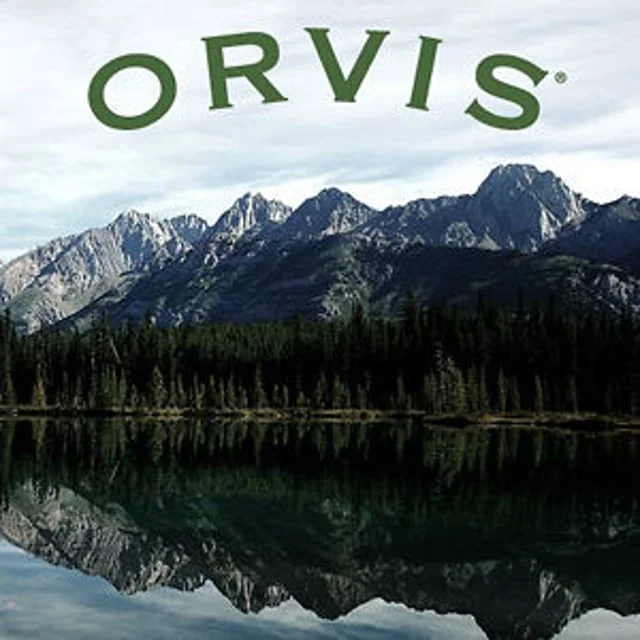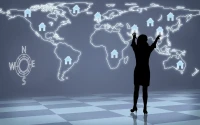When the headlines hit, the narrative wrote itself: a legacy brand, battered by economic forces, forced into a painful retreat. News that Outdoor gear retailer Orvis closing half its stores, citing tariffs painted a grim picture of a 170-year-old American icon on the ropes. It’s an easy story to tell, the classic tale of a bygone era succumbing to the harsh realities of modern commerce.
But what if that’s the wrong story? What if we’re witnessing not a death, but a metamorphosis?
When I first read the details of Orvis’s decision, I honestly just sat back in my chair, a slow smile spreading across my face. Because buried under the talk of tariffs and store closures is a masterclass in 21st-century brand survival. This isn't a story of failure. This is the story of a company rediscovering its soul by shedding its skin. Orvis isn't just closing stores; it's completing its transformation from a sprawling retail empire into a nimble, hyper-focused platform for passion.
The Great Unbundling of a Legacy
For decades, we knew Orvis as a bundle. It was the iconic catalog that landed in your mailbox with a satisfying thud. It was the sprawling `orvis store` where you could buy a world-class `orvis fly rod` in one aisle and a high-end `orvis dog bed` in the next. It was `orvis clothing` for a weekend in the country, from a rugged `orvis jacket` to a classic `orvis shirt`. The company became an everything-provider for a certain kind of rustic, aspirational lifestyle.
This model worked for a century. But in today's world, that bundle becomes an anchor. The overhead of massive retail footprints, the logistics of a broad inventory, the sheer noise of trying to be all things to all people—it’s a model built for a different time. Then comes the external shock President Simon Perkins calls the "unprecedented tariff landscape," a situation that led to the news that Tariffs force more Orvis store closures. It’s easy to blame the tariffs, to see them as the villain of the piece. But I see them as something else: the catalyst. They were the fire that forced the alchemy.
Think of the old Orvis as a magnificent, sprawling oak tree. It was huge, impressive, and provided shade for everyone. But its root system was spread thin, trying to draw nutrients from too many different places. The new Orvis is like a redwood. It’s pulling its resources inward, shedding the lower branches that no longer serve the primary trunk, and focusing all its energy on growing straight and true towards the sky. The company is strategically unbundling itself—separating its core identity from the physical and product baggage that had accumulated over the years. They’re making a brave bet that their strength isn’t in their square footage, but in their singular, world-class expertise.
What does that look like? It means a laser focus on what made them legendary in the first place: `orvis fly fishing` and wingshooting. It means that the `orvis fly rods` still crafted by hand in Vermont aren't just a product; they are the sun around which the entire new Orvis ecosystem orbits.
From Selling Products to Powering a Community
This is the part that truly excites me. Orvis is making a move that I believe every legacy brand must study. They are transitioning from being a product company to being a platform company. It’s a fundamental paradigm shift that separates the brands that will thrive from those that will become museum pieces.

Let me break that down. They’re building a modern platform with three core pillars:
1. The Hardware: This is the best-in-class physical gear. The `Orvis Clearwater` rod, the `Orvis Battenkill` reels, the perfectly engineered `orvis waders`. This is the tangible, physical manifestation of their expertise. It’s the price of entry, the proof of their authority.
2. The Software: This is their direct-to-consumer (DTC) website and digital presence. By killing the catalog and halving their stores, they're funneling everyone into a single, powerful digital hub. This is where they control the narrative, own the customer relationship, and build their community directly. It's so much more than just an online store—it's the digital lodge where the community gathers.
3. The Service Layer: This, to me, is the genius stroke. It’s the Orvis Adventures network—the endorsed guides, lodges, and experiences. Orvis isn't just selling you the rod; they're providing the entire ecosystem for you to use it in a meaningful way. They are selling the experience of the wild, not just the tools to access it.
This is a move that is so much more than just downsizing—it’s a declaration that a brand's value isn't in its physical assets but in its community, its deep knowledge, and the unforgettable experiences it curates, and that is a lesson every company in every industry needs to absorb right now. They're focusing on their DTC model—in simpler terms, it means cutting out the noise and building a direct, unbreakable bond with the people who live and breathe the brand.
Of course, there’s a human cost to this kind of profound shift. Layoffs and store closures are not abstract concepts; they affect real people and communities. We can't and shouldn't ignore the pain that comes with such a massive restructuring. It’s a necessary evolution, perhaps, but that doesn't make it painless. The responsibility for a company like Orvis is to handle this transition with the same care and integrity they put into crafting a fly rod.
But this shift feels as significant as the invention of the printing press was for knowledge. For centuries, the story of Orvis was told through the printed catalog and the physical store—a slow, expensive, and broad medium. Now, they're shifting to a new medium: a digital, experiential network that delivers their core purpose with incredible precision and passion. The method of delivery is changing, but the soul of the brand is becoming clearer and more powerful than ever. What could be more forward-looking than that?
A Blueprint for Authenticity
Let's be clear. This isn't a retreat. It's a strategic advance into the future of what a brand can be. Orvis is drawing a line in the sand. They are consciously choosing to be a mile deep and an inch wide, rejecting the siren song of mass-market appeal to super-serve their tribe. They are proving that the most durable brand model for the next 170 years isn't about being everywhere for everyone; it's about being everything to the right someone. In a world saturated with generic products and soulless retail experiences, Orvis is doubling down on what is real: craftsmanship, community, and the call of the wild. This isn't just a survival plan; it's a beacon for every other company trying to find its way.









